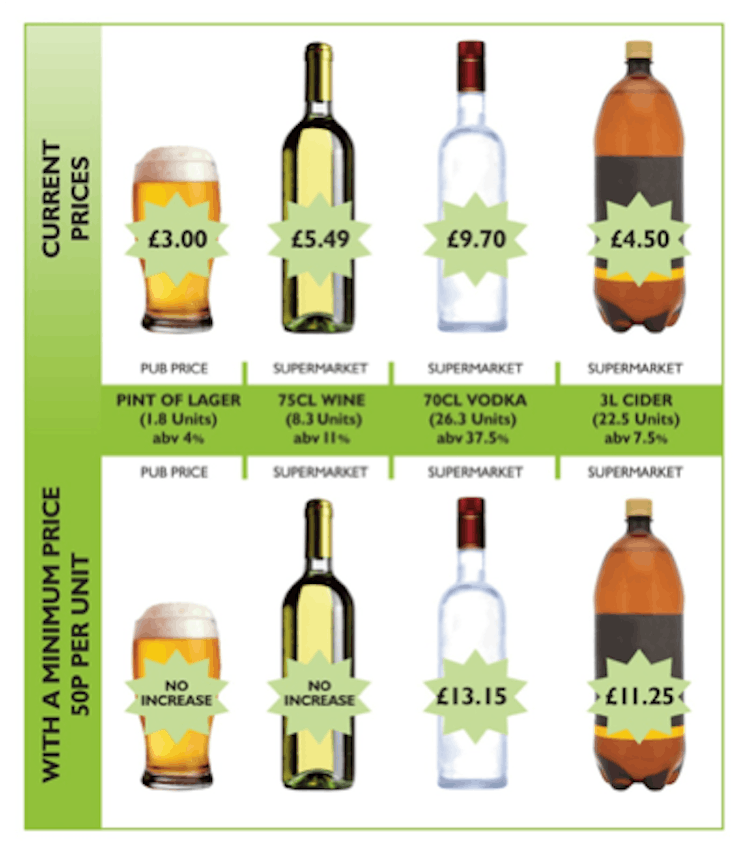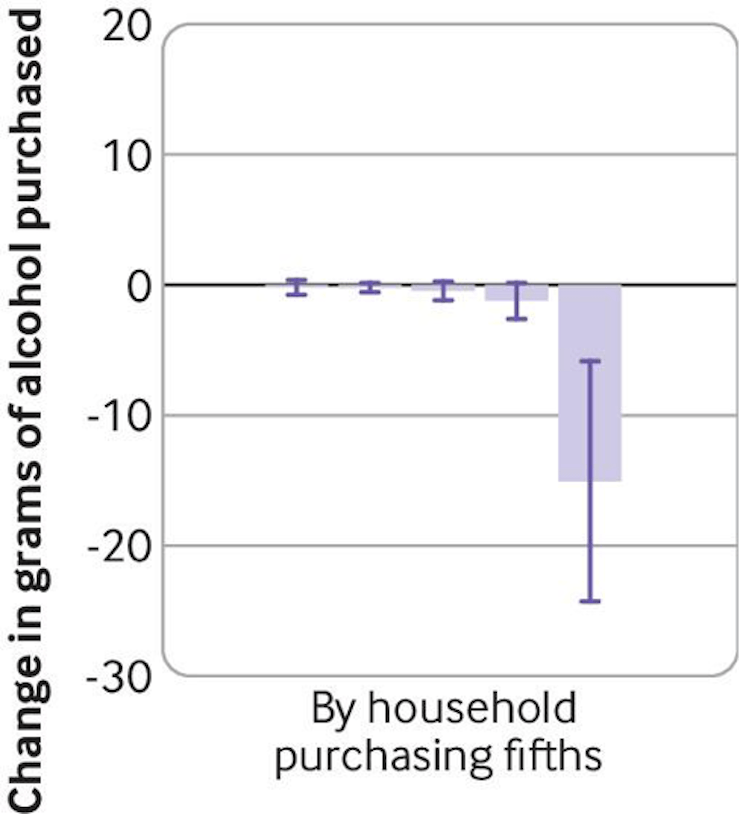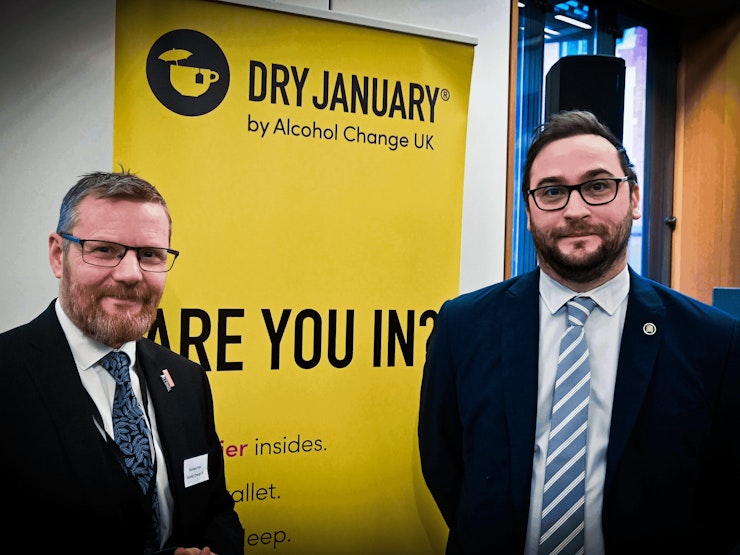Examples of MUP and its effect on different products
MUP works
The World Health Organisation recommends increasing the price of alcohol as one of the most effective ways to reduce alcohol-harm, and we have seen MUP reduce consumption levels of certain products in Scotland. Even amongst other price measures, MUP stands out as effective. This is largely because it targets those who consume the most, and thus are at the most risk of harm. It does this for two reasons. Firstly, those who drink more tend to spend a higher proportion of their income on alcohol – this makes them more sensitive to changes in price. Secondly, while those drinking at higher levels are spending more overall they tend to buy cheaper individual products, the very same products that MUP most affects.
This targeting is borne out by what we have observed in Scotland. The figure below is adapted from a recent paper, which compared the changes in purchasing behaviour of alcohol in Scottish households (with MUP) to English households. Scottish households are arranged, left to right, from those that purchase the least (left) to the most (right). The effect of MUP on their purchasing is shown by the size of the bar, with negative numbers indicating reduced purchasing levels. This data clearly shows that MUP’s effects have been targeted to the heaviest consumers. We have not yet seen this change in behaviour filter through to an observed improvement in health outcomes. But since health follows behaviour change, a lag is to be expected.





